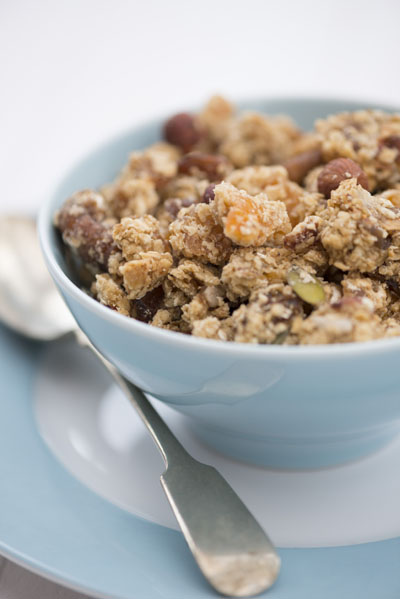Consumers around the world are increasingly interested in food and beverage products that they perceive to be healthier. Of course, most understand that avoiding certain ingredients is only half the battle; but, in addition, many are also interested in foods with added health benefits, and fibre is particularly popular.
Consumers everywhere are looking to reduce their intake of sugar, fat and calories, and increase their fibre consumption, but specific attitudes vary by region. For example, although consumers in the US and Europe are more likely to avoid sugar than fat, those living in Latin America and the Middle East rank their concerns in the opposite order, with fat being a higher concern than sugar.1
Moreover, consumers in Latin America are the most interested in increasing their fibre consumption (70% compared with a global average of 52%), followed by consumers in the US (60%).1
More and more, manufacturers are turning to select fibres for their unique ability to deliver a satisfying sensory experience in reduced-sugar and reduced-calorie formulations while also enabling popular claims related to health and nutrition benefits — such as source of fibre, digestive health and even heart health.
Saquib Ramday, Regional Product Manager for Tate & Lyle’s fibres portfolio in Europe confirms this trend: “In Europe, there is a lot of interest from food formulators about enriching foods with soluble dietary fibre across a variety of categories.”
The fibre gap
Despite their best intentions, most consumers around the world struggle to meet the recommended guidelines for daily fibre intake. The World Health Organization suggests adults consume 25 g/day, but most people fall short of this number.2 In the US, for example, only 3% of consumers meet the recommended daily fibre intake.3
So, why aren’t consumers eating enough fibre? A large portion (33%) claim it’s because there are not enough products with fibre available in the market.1 That means that manufacturers have a major opportunity to provide the desired products and help to narrow the fibre gap.

Why fibre? Which fibre?
It’s important to understand the various reasons why consumers want to eat more fibre, as well as the fibre sources they prefer. It’s not surprising that digestive health is the top motivator globally.
Consumers in Europe are also interested in fibre for a “healthy diet,” whereas consumers in the Middle East are primarily interested in fibre because it helps keep them “full for longer.”
Regularity is a top driver in the Asia-Pacific region. As for fibre sources, most regions prefer oat, wheat, corn or barley. A majority (66%) of global consumers are favourable toward seeing “oat fibre” on a label, and 47% are favourable toward “soluble corn fibre.”
Fibre formulation
Taste is the primary purchase driver for consumers, so it’s important to choose fibres that won’t negatively affect either taste or texture. For example, some high-fibre formulations have a gritty mouthfeel, and consumers won’t tolerate that no matter how much they want to increase their fibre intake.
Here are a few other important things to consider when creating a great-tasting product with fibre:
- clean label: formulate with a fibre that offers consumer-friendly labels to add more appeal to your product
- digestive comfort: avoid certain fibres that, particularly at high inclusion levels, could cause digestive discomfort
- process stability: ensure that the fibre content in your product remains consistent during processing and shelf-life.
It’s clear that fibre has a lot to offer manufacturers, no matter where their consumers live. From a formulation perspective, fibre can improve product body and mouthfeel, which are often lost as a result of sugar reduction.
From a marketing point of view, it also enables manufacturers to make a variety of claims related to health or nutrition benefits that resonate with consumers around the world. This means whether consumers want to eat less sugar or get more nutritional benefits, fibre can help.
“Tate & Lyle has a unique portfolio of soluble fibres, including Promitor Soluble Fibre, which meets consumer desire for improved nutrition and clean labelling without sacrificing taste or texture,” says Saquib Ramday.
“Good category examples for fibre enrichment are particularly those such as bars and beverages in convenient on-the-go pack formats that can be consumed at various times during the day.”
References
1. Internal research for Tate & Lyle conducted by Qualtrics: 8800 global respondents (800 per country), 2015 (Turkey and Saudi Arabia, 2016).
2. The Joint WHO/FAO Expert Consultation on Diet, Nutrition and the Prevention of Chronic Diseases: Process, Product and Policy Implications: www.who.int/nutrition/publications/public_health_nut9.pdf.
3. B.P. Marriott, et al., “Intake of Added Sugars and Selected Nutrients in the United States, National Health and Nutrition Examination Survey (NHANES),” Critical Reviews in Food Science and Nutrition 50(3), 228–58 (2010).
